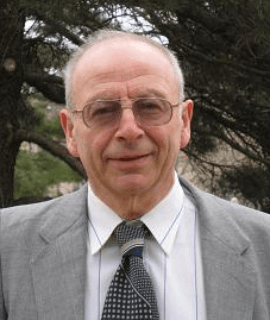Abstract:
It is proved that the Navier-Stokes equations are physically and mathematically contradictive and there is no solution to the Navier-Stokes problem on the whole semi-axis of time in the whole three-dimensional space without boundaries. The aim of this talk is to analyse the Navier-Stokes problem (NSP) in R3 without boundaries. It is proved that the NSP is contradictory in the following sense: If one assumes that the initial data v(x; 0) 6 0, r v(x; 0) = 0 and the solution to the NSP exists for all t 0, then one proves that the solution v(x; t) to the NSP has the property v(x; 0) = 0. This paradox (the NSP paradox) shows that the NSP is not a correct de- scription of the uid mechanics problem for incompressible viscous uid and the NSP does not have a solution dened for all t > 0. In the exceptional case, when the data are equal to zero, the solution v(x; t) to the NSP does exist for all t 0 and is equal to zero, v(x; t) 0. These results are proved in [1]-[4]. These results solve one of the millennium problems.
key words: The Navier-Stokes problem
Biography:
Alexander G. Ramm was born in Russia, emigrated to USA in 1979 and is a US citizen. He is Professor Emeritus of Mathematics with broad interests in analysis, scattering theory, inverse problems, theoretical physics, engineering, signal estimation, tomography, theoretical numerical analysis and applied mathematics. He is an author of 719 research papers, 20 research monographs and an editor of 3 books. He has lectured in many Universities throughout the world, gave more than 150 invited and plenary talks at various Conferences and had supervised 11 Ph.D students. He was Fulbright Research Professor in Israel and in Ukraine, distinguished visiting professor in Mexico and Egypt, Mercator professor, invited plenary speaker at the 7-th PACOM, he won Khwarizmi international award in 2004, and received many other honors. A.G.Ramm as solved inverse scattering problems with fixed-energy scattering data, with non-over-determined scattering data and studied scattering problems with under-determined scattering data. He solved many specic inverse problems and developed new methods in this area. He solved the many-body wave scattering problem when the bodies are small particles of arbitrary shapes and used this theory to give a recipe for creating materials with a desired refraction coecient. These results attracted attention of the scientists working in nanotechnology. He gave formulas for the scattering amplitude for scalar and electro- magnetic waves by small bodies of arbitrary shapes and formulas for the polarizability tensors for such bodies. He gave a solution to the Pompeiu problem, proved the Schiffer's conjecture and gave rst symmetry results in harmonic analysis. He has developed the Dynamical Systems Method (DSM) for solving linear and non-linear operator equations, especially ill-posed. He developed a random elds estimation theory and studied convolution equations with hyper-singular integrals. Recently, he solved the millennium problem, the Navier-Stokes problem (NSP) and proved a paradox in the NSP which shows the contradictory nature of the NSP and the non-existence of its solution on the interval t ∈ [0, ∞) for the initial data v0(x) not identically equal to zero and the force f (x, t) = 0.


